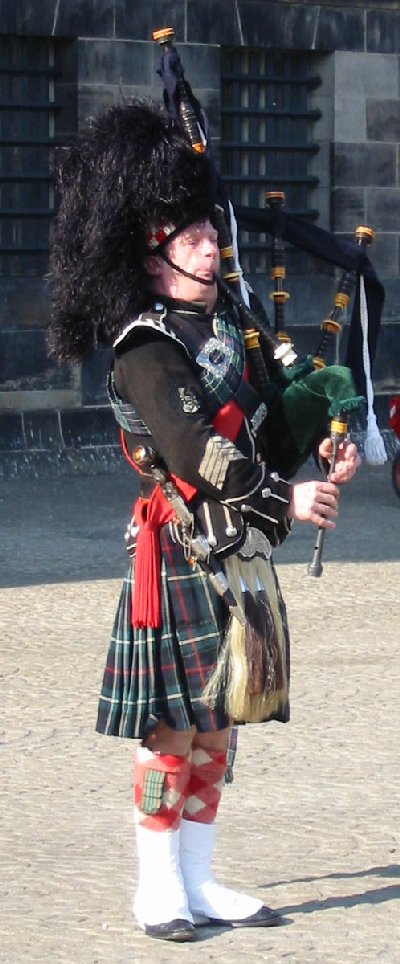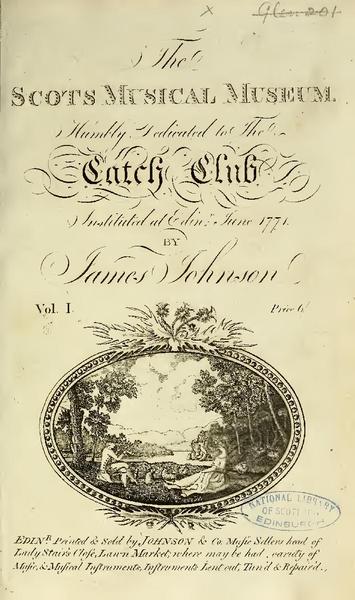|
There Grows A Bonnie Brier Bush
''There Grows a Bonnie Brier Bush'', originally ''The Bonnie Brier Bush'', is a traditional Scottish music folk song. It was included with expanded lyrics in Burns' Scots Musical Museum in 1797. Ian Maclaren included part of the song lyrics in the preface to his bestselling collection of stories set in Scotland, ''Beside the Bonnie Brier Bush'' (1894). A series of theatrical versions and the 1921 film The Bonnie Brier Bush followed. The song notes the country kailyard (kale Kale (), or leaf cabbage, belongs to a group of cabbage (''Brassica oleracea'') cultivars grown for their edible leaves, although some are used as ornamentals. Kale plants have green or purple leaves, and the central leaves do not form a head ... yard). References Scottish folk songs {{Folk-song-stub ... [...More Info...] [...Related Items...] OR: [Wikipedia] [Google] [Baidu] |
Scottish Music
Scotland is internationally known for its traditional music, which remained vibrant throughout the 20th century and into the 21st, when many traditional forms worldwide lost popularity to pop music. In spite of emigration and a well-developed connection to music imported from the rest of Europe and the United States, the music of Scotland has kept many of its traditional aspects; indeed, it has itself influenced many forms of music. Many outsiders associate Scottish folk music almost entirely with the Great Highland Bagpipe, which has long played an important part in Scottish music. Although this particular form of bagpipe developed exclusively in Scotland, it is not the only Scottish bagpipe. The earliest mention of bagpipes in Scotland dates to the 15th century although they are believed to have been introduced to Britain by the Roman armies. The ''pìob mhór'', or Great Highland Bagpipe, was originally associated with both hereditary piping families and professional pipers t ... [...More Info...] [...Related Items...] OR: [Wikipedia] [Google] [Baidu] |
Scots Musical Museum
The ''Scots Musical Museum'' was an influential collection of traditional folk music of Scotland published from 1787 to 1803. While it was not the first collection of Scottish folk songs and music, the six volumes with 100 songs in each collected many pieces, introduced new songs, and brought many of them into the classical music repertoire. The project started with James Johnson, a struggling music engraver / music seller, with a love of old Scots songs and a determination to preserve them. In the winter of 1786 he met Robert Burns who was visiting Edinburgh for the first time, and found that Burns shared this interest and would become an enthusiastic contributor. The first volume was published in 1787 and included three songs by Burns. He contributed 40 songs to volume 2, and would end up responsible for about a third of the 600 songs in the whole collection as well as making a considerable editorial contribution. The final volume was published in 1803 and contained the first ... [...More Info...] [...Related Items...] OR: [Wikipedia] [Google] [Baidu] |
Ian Maclaren
John Watson (3 November 1850 – 6 May 1907), was a minister of the Free Church of Scotland. He is remembered as an author of fiction, known by his pen name Ian Maclaren. Life The son of John Watson, a civil servant, he was born in Manningtree, Essex, and educated at Stirling. His paternal uncle Rev Hiram Watson (1813-1891) was a minister of the Free Church of Scotland and John appears to have chosen to follow in his shoes.Ewing, William ''Annals of the Free Church'' He studied at Edinburgh University, then trained as a Free Church minister at New College in Edinburgh, also undertaking some postgraduate study at Tübingen. In 1874 he was licensed by the Free Church of Scotland and became assistant minister of Edinburgh Barclay Church. In 1875 he was ordained as minister at Logiealmond in Perthshire. In 1877 he was transferred to St Matthews Free Church in Glasgow. In Glasgow he lived at 44 Windsor Terrace. In 1880 he became minister of Sefton Park Presbyterian Church i ... [...More Info...] [...Related Items...] OR: [Wikipedia] [Google] [Baidu] |
Beside The Bonnie Brier Bush
''Beside the Bonnie Brier Bush'' is a book of short stories by Ian Maclaren published in 1894. It became a hugely popular bestseller. It is considered to be part of the Kailyard School of Scottish literature. A kailyard or kailyaird ( kale) is comparable to a cabbage patch and refers to a kitchen garden as might be found adjacent to a cottage. The title, ''Beside the Bonnie Brier Bush'', references the Jacobite song " There grows a bonnie brier bush in our Kailyard". ''Publishers Weekly'' reported it as the bestselling novel in the U.S. during 1895 and the 10th bestselling novel during 1896. The stories in the book recount some of MacLaren's experiences as a Free Church minister in rural Perthshire and blends humour and pathos with racy Scots dialogue. Maclaren mentions the Drumtochty Forest in the book. William Hole illustrated an 1896 Hodder & Stoughton edition of the book. In the U.S., Clifton Johnson illustrated an edition of the book as well as MacLaren's ''The Days ... [...More Info...] [...Related Items...] OR: [Wikipedia] [Google] [Baidu] |
The Bonnie Brier Bush
''The Bonnie Brier Bush'' is a 1921 British drama film directed by Donald Crisp. Alfred Hitchcock is credited as a title designer. The film is considered to be lost. Plot As described in a film magazine, dour Scottish shepherd Lachlan Campbell (Crisp) is exceedingly harsh with his daughter Flora (Glynne). Flora and Lord Malcolm Hay (Fraser), the son of the Earl of Kinspindle (Robertshaw), marry secretly according to Scottish custom, and parental objection leads to misunderstandings followed by separation and misery. A logical resolution leads to a satisfactory ending. Cast * Donald Crisp as Lachlan Campbell * Mary Glynne as Flora Campbell * Alec Fraser as Lord Malcolm Hay * Dorothy Fane as Kate Carnegie * Jack East as Posty * Langhorn Burton as John Carmichael (credited as Langhorne Burton) * Jerrold Robertshaw as Earl of Kinspindle * Adeline Hayden Coffin as Margaret Howe (credited as Mrs. Hayden-Coffin) See also * Alfred Hitchcock filmography Alfred Hitchcock (1899–1 ... [...More Info...] [...Related Items...] OR: [Wikipedia] [Google] [Baidu] |
Kailyard
The traditional kitchen garden, vegetable garden, also known as a potager (from the French ) or in Scotland a kailyaird, is a space separate from the rest of the residential garden – the ornamental plants and lawn areas. It is used for growing edible plants and often some medicinal plants, especially historically. The plants are grown for domestic use; though some seasonal surpluses are given away or sold, a commercial operation growing a variety of vegetables is more commonly termed a market garden (or a farm). The kitchen garden is different not only in its history, but also its functional design. It differs from an allotment in that a kitchen garden is on private land attached or very close to the dwelling. It is regarded as essential that the kitchen garden could be quickly accessed by the cook. Historically, most small country gardens were probably mainly or entirely used as kitchen gardens, but in large country houses the kitchen garden was a segregated area, nor ... [...More Info...] [...Related Items...] OR: [Wikipedia] [Google] [Baidu] |
Kale
Kale (), or leaf cabbage, belongs to a group of cabbage (''Brassica oleracea'') cultivars grown for their edible leaves, although some are used as ornamentals. Kale plants have green or purple leaves, and the central leaves do not form a head (as with headed cabbage). Kales are considered to be closer to wild cabbage than most of the many domesticated forms of ''Brassica oleracea''. Etymology ''Kale'' originates from Northern Middle English ''cale'' (compare Scots ''kail'' and German ''Kohl'') for various cabbages. The ultimate origin is Latin ''caulis'' 'cabbage'. History Kale originated in the eastern Mediterranean and Anatolia, where it was cultivated for food beginning by 2000 BCE at the latest. Curly-leaved varieties of cabbage already existed along with flat-leaved varieties in Greece in the 4th century BC. These forms, which were referred to by the Romans as Sabellian kale, are considered to be the ancestors of modern kales. The earliest record of cabbages in w ... [...More Info...] [...Related Items...] OR: [Wikipedia] [Google] [Baidu] |




